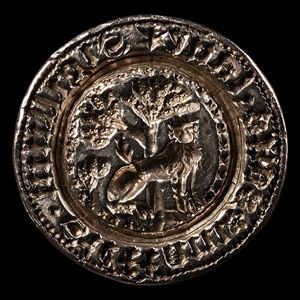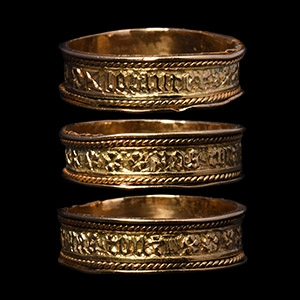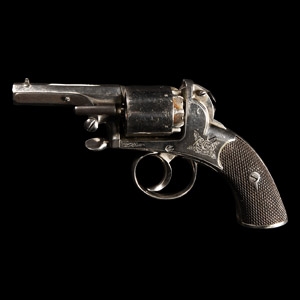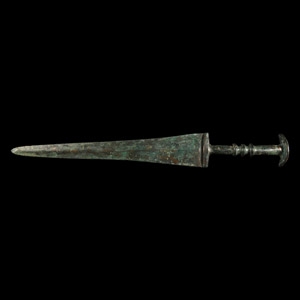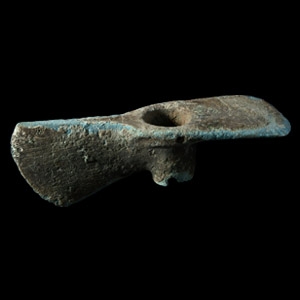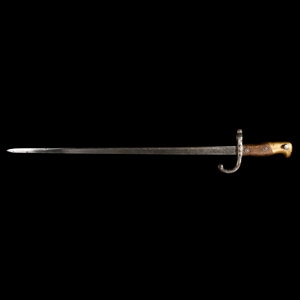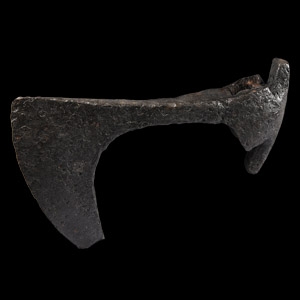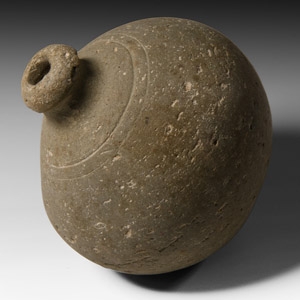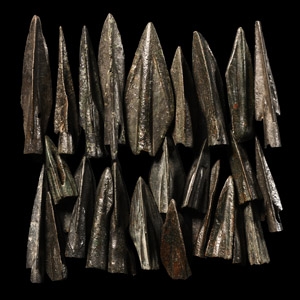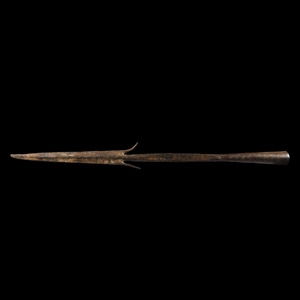Home > Auctions > 21 - 25 February 2023
Ancient Art, Antiquities, Natural History & Coins
Auction Highlights:
Acquired 1980-2015.
Ex Abelita family collection.
Cf. Muscarella, O.W., Bronze and Iron Ancient Near Eastern Artifacts in the Metropolitan Museum of Art, New York, 1988, pp.289ff., for similar, nos.408, 409, 416.
A number of arrowheads of this type have been excavated from the Northern Iranian Plateau, in Luristan and in the South-Caspian region. Many parallels have a burial provenance, but a large hoard of them was found in a non-funerary context. This type of arrowhead has been in use from the 2nd millennium B.C. Godard claimed that barbed types of heads came from tombs from Luristan, like the ones found in Tang-i-Hamamlan.
Acquired Peter Wilson Auction, 2020, lot 10.
Property of a Kent collector.
Accompanied by lot ticket.
Sold as an exempt item under Section 58 (2) of the Firearms Act, 1968, to be held as a curiosity or ornament. No license required but buyer must be over 18 years of age.
Ex S. Motamed collection.
with Bellman's Auctions, 20th-26th June 2015, lot 2482.
Property of a London gentleman.
Cf. for a parallel (in iron) Vanden Berghe L., ‘Excavations in Pusht-i Kuh (Iran) Tombs Provide Evidence on Dating "Typical Luristan Bronzes"’ in Archaeology, June, 1971, pp.263-271, fig.10, p.265.
Several similar iron daggers were discovered during excavations at War Kabud. Differently from the bronze specimens, where the handle is ribbed, the iron specimens have bronze nails for fastening of the wooden grip on either side.
Acquired in the 1980s.
London, UK, private collection.
Property of an Essex gentleman.
Acquired on the UK antiques market between 1974-1985.
Albert Ward collection, Essex, UK.
See Capwell, Dr Tobias, Knives Daggers & Bayonets, 2009, p.179.
Acquired 1971-1972.
From the collection of the vendor's father.
Property of a London, UK, collector.
Cf. Arbman, H., Birka I: Die Gräber, Uppsala, 1940, pl.14(5); Hjardar K. and Vike, V., Vikings at war, Oxford-Philadelphia, 2016, p.162, for a similar specimen from Troms, dated 1000-1050 A.D.
The broad axe of type M is a weapon specifically designed as battle-axe with the edge, being Þunssleginn, i.e. thinly forged. These broad axes were the prerogative of the housecarls of the Anglo-Danish King Canute, of the guardsmen fighting with Harold at Stamford Bridge and Hastings in 1066 A.D. and of the famous Varangian Guard of the Roman emperors of Constantinople.
Acquired 1971-1972.
From the collection of the vendor's father.
Property of a London, UK, collector.
Cf. Arbman, H., Birka I: Die Gräber, Uppsala, 1940, pl.14, item 3; Sedov, B.B., Finno-Ugri i Balti v Epokhi Srednevekovija, Moscow, 1987, table V, items 16, 17, 20.
Iron axeheads of this typology show a sub-trapezoidal asymmetrical blade, sometimes perforated through the centre. They are characterised by two projecting spurs to the back of the shaft-hole.
Previously in a private collection since the 1990s.
Property of a Sussex, UK, teacher.
Accompanied by an academic paper by military specialist Dr Raffaele D'Amato, dated 15 July 2019 and titled 'Eastern Roman Empire - Greek Fire Bomb or Hand Grenade (μεσαίον kακάβιον) 9th-11th century AD'.
Cf. Arendt, W. I., Granaten des 13-14. Jahrhunderts, die an der Wolga gefunden sind, Zeitschrift fur Historische Waffen-und Kostumkunde, 11 (1926-8), p.42; cf. Arendt, W., Die Spharisch-konischen Gefasse aus Gebranntem Ton, ibid; cf. Ayalon, D., Gunpowder and Firearms in the Mamluk Kingdom, London, 1956, p.16.
Apart from the use of siphons or manual flame-throwers called cheirosiphona, special corps of Roman soldiers employed terracotta grenades, in the form of small jars, abundantly evidenced in archaeological excavations. Such were the γανωτα, vessels (sometimes also of bronze) used for Greek fire. They were called μεσαία kακαβιά or κυτροκακάβια where the former had a bulbous shape and the latter a more cylindrical form.
Acquired before 2000.
From the collection of a European gentleman living in the UK.
Early 1990s London collection.
Acquired on the UK art market.
From a private collection, Lancashire, UK.
Cf. Muscarella, O.W., Bronze and Iron Ancient Near Eastern Artifacts in the Metropolitan Museum of Art, New York, 1988, no.539, p.407, for similar.
These kind of axes had a simple but aesthetic form, with the round socket placed at the edge of the rounded butt which tapered smoothly to a flat, splayed crescent-shaped blade.
Acquired before 2000.
From the collection of a European gentleman living in the UK.
Acquired 1980-2015.
Ex Abelita family collection.
Cf. Gernez, G., L’armament en métal au Proche et Moyen-Orient: des origines a 1750 av. J.C., Paris, 2007, p. 310 vol. I, pl.188 vol.II, subtype L2F.A (?), for the type.
745 - 756 of 2116 LOTS


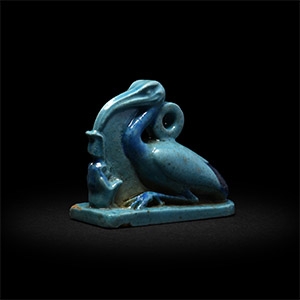



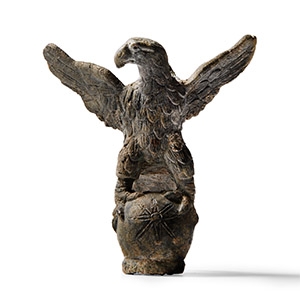
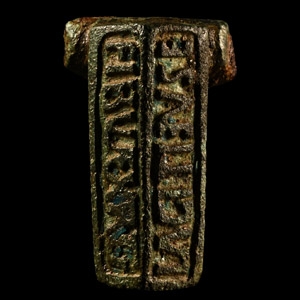

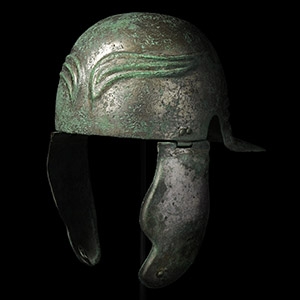
.jpg)
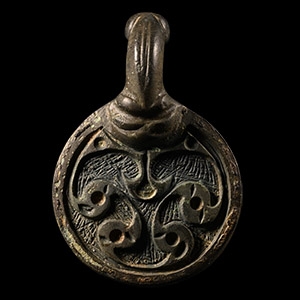
.jpg)
